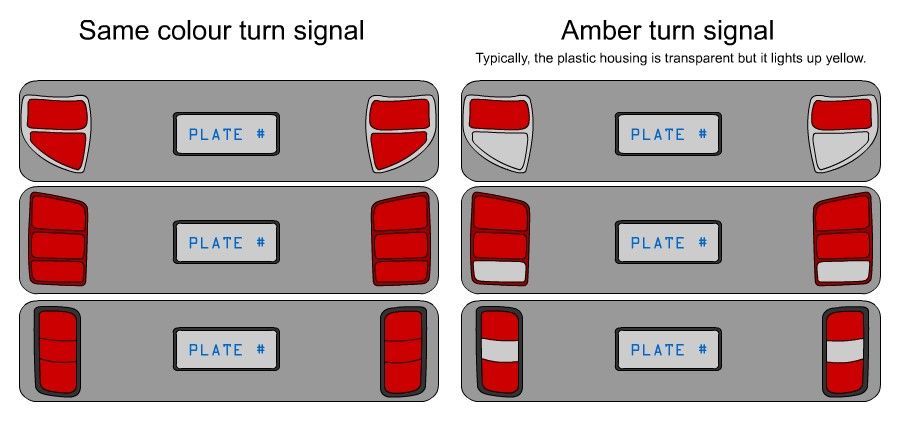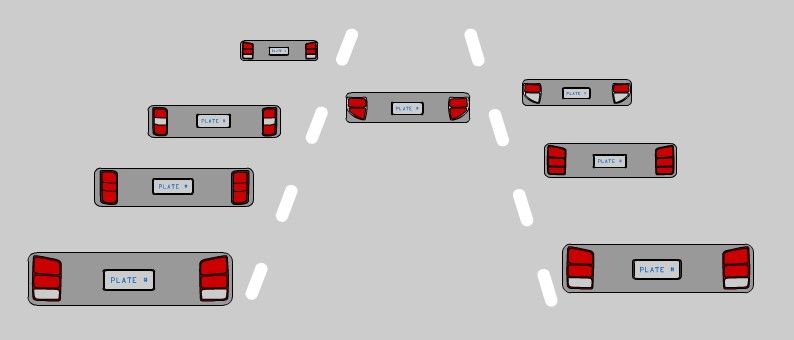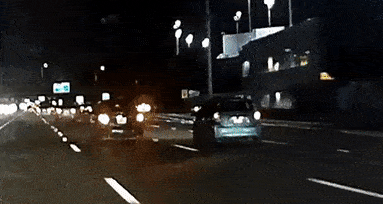The Downfall of Headphone Jacks
As you can tell by the title of this post, I am pretty upset about
Cars in America are weird. We’re not even talking about the apparent fascination with massive trucks nor getting to operate two tonne killing machines even before they’re allowed to legally drink or vote. Nor about how the driver's seats are on the wrong side of the car. This is about the machines themselves.
I guess in modern times, if you talk about a car, most people get the same general idea. We’d picture metal pods with three to twenty wheels that run on dino juice or in recent years, pikachu essence, that bring you from point to point. We’ve gotten quite good at building these such that they all fit on the same roads.
One important feature of these hulking death machines is that they need to be good at letting the operator communicate their intentions to the outside world. This can take the form of an audio (horn) or visual (indicator lights) feedback. For some reason, the vehicles in America don’t appear to follow the correct standards (what an absolute shock).
<rage>
When the cars I’m used to (in Singapore or Japan) are put into reverse gear, there’s a polite beep beep beep sound that comes along with it. It probably isn’t loud enough to warn the people outside that you’re reversing but it lets the driver know that they’re in the wrong gear (if they intend on moving forward).
Admittedly this is a small gripe and I frankly don’t have enough data points to claim that this is true at all. Maybe because cars in Singapore are generally newer. Maybe I’ve only driven crappy cars in America. Or maybe I’m right about this. Someone please help me clarify this fact (I say to the unending void of the internet).
Modern cars are all cool and whatnot. They can be remotely controlled by the simple key fob. One of the nice things about them is that when you do anything, you get some form of audio or visual feedback. The most typical use case is when you lock the door after parking the car. A human would press the lock button on their key fob, and the car would lock. Being the nervous and untrusting critters humans are, they would press it a few more times to really make sure the cars are locked.
Now, this is how it would play out in Singapore / Japan / Anywhere else?.
That was a nice interaction and no one was left crying. Now if this were to play out in the land of the free.
This has caused me so much anxiety when I first moved here and it still does from time to time. Not even when I’m in my car my car, but when I’m casually walking down the road. I hear cars honk and I spin around and perform three backflips to get out of the way of the impending car crash. All that just to find out it was some bloke locking his car across the street.
Ok I admit that this header is slightly clickbait-y. But I’m only semi kidding. This is a problem that has plagued drivers all over America and does not seem to go away. I don’t know how any authority that can call themselves responsible will even allow such a thing to come to pass. This is a matter more serious than any other political matter currently being procrastinated in parliament (or was it court? I don’t politics man.) Oh, have I been rambling so much that I forgot to clarify the problem?
This is going to be a long one, so sit tight.
The problem is that, it is appallingly not a requirement to have amber coloured turn signals on their vehicles. For all of you out there in countries that actually make sense, the cars in America make use of their tail brake lights to indicate turning. So the back of a car consists of two different colours, red, and white (for reverse). When the vehicle operator wants to indicate turning intent, the appropriate red light would blink. I know right?
Now hear me out, this is a much bigger problem than it seems.
There are good reasons to differentiate the colours for the turning and braking signals. Yes, making use of the red lamp technically works to provide the other road users with the driver’s intent. But at the same time, <insert hyperbolic equivalent here>.
At first glance, it’s hard to figure out where the light is.
When driving, drivers typically have to monitor about 3 - 10 cars in their field of view. They will not have the luxury of figuring out which light is the turning signal. Making one of the lights amber makes it very clear which of the lights turn signal is, as can be seen by the diagram below.

Even with that, if you see 10 different cars in front of you, it becomes hard to make out which lights are which.

Because of that, I’ll be grouping the lights together into a single blurry blob each for the rest of my explanations.
It’s not immediately clear what the driver’s intent is (especially at night)
This happened to me recently. There was a car driving in front to my left, and he started signalling right to come into my lane. Now I'm a nice driver and if I saw a signal, I would slow down to give way. Unfortunately, with the turn signal being red, when I caught it in my peripheral vision it did not register that the car wanted to turn. In fact, I thought the vehicle was braking. The car was also on my left, so my eye only caught the right side of the car and I couldn't see that the other side was braking.

When driving at night, the tail lights are (should be?) on and will make matters even worse.

Turning and braking at the same time is confusing
As with the previous one, I only show one side, because a driver will typically be noticing this from their peripheral vision.
Here is an example of someone intermittently braking. Notice how it’s sometimes not really possible to determine if the person is braking intermittently or if they have indicated that they are turning? If you look closely, you may notice that the timing between the flashes are not constant.

Now, let’s look at an example of someone flashing their turn signal. Here we can see on the right side, it’s plainly obvious that the person has their turn signal on. Whereas on the left side, it’s still not really possible to tell.

Now let’s play with an even more complex example. Where the person is both intermittently braking as well as having their turn signal on. This is not even a completely hypothetical situation. I’ve had this happen to me before and I had no clue what was happening.
I’ve put some helpful text below to help you decipher what is going on. But we can plainly see that the right version is superior in every possible way.

I am aware that brake lights generally have a third light to clear up this ambiguity. Also, if I looked at the car for just one more second, I would be able to tell what the driver is doing. As mentioned in the above paragraph (you did read that didn’t you?), drivers do not spend time observing the 5 billion cars they see daily. Most of the time, small details like these are only noticed in their peripheral vision. Not to mention that humans tend to get distracted, or get sleepy while driving. People get one glance at a car, and having a different colour will make that glance count.
Conflicts with the hazard lights.
Sometimes the drivers need to turn on their hazard lights on the highway, due to some emergency or whatnot.
When a driver sees a hazard light come on, they would pay more attention to the car and drive more carefully around it. But when the lights use the red lights, an observing driver might think the other driver were simply tapping their brakes. It would require 3 or 4 blinks before it's clear that the hazard lights are on.
Furthermore, the brake lights are reduced to the centre one and it’s harder to tell if a car is braking or not.
Here’s an example similar to the one above. You can see the difference between the hazard lights and the brake lights very clearly on the right one.

Light failures could potentially be worse
I have no evidence to back this up, but in the event one of the lights blew, it could potentially take out a brake and indicator light at the same time.
Wait, but what if...
What if you’re colour blind and can’t tell the differences in the colour?
Firstly, that’s not how colour blindness works. For the most part, they can still tell the difference between red and yellow.
Secondly, they fall back to the seeing the blinkyness of the lights.
Thirdly, there are way more people who aren’t colour blind who would benefit immensely from this.
Fourthly, I’m arguing against myself.
But it’s easier and cheaper for manufacturers to have one less part to worry about in cars.
This is just a cop out excuse. Every other car manufacturer in the world supports amber coloured lights. Heck, even my favourite car manufacturer Tesla (trying to cut as many costs as possible and is in violation of this whole section) has amber lights for their international models. Meaning that they deliberately decided (wrongly) that red turn signals are better, and only made the amber turn signals to comply with the international laws.
In fact, I’d argue that it’s easier to have separate systems for braking and turning. If you have red turn signals, you’ll need to override the brake lights when the driver is turning, meaning that behaviour has to be deliberately programmed into the car.
</rage>
All things considered, I’m glad that whatever applicable authority decided that the accelerator pedal would be on the right and the brake would be on the left, regardless of which side the driver’s seat is on. I would not appreciate being in a foreign country and jamming the accelerator pedal instead of the brake in an emergency. I suppose when it comes to trivial things like “safety concerns” they actually do put some thought into it.
